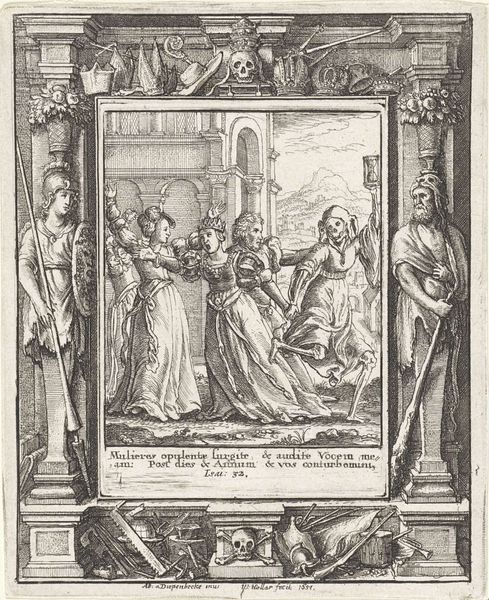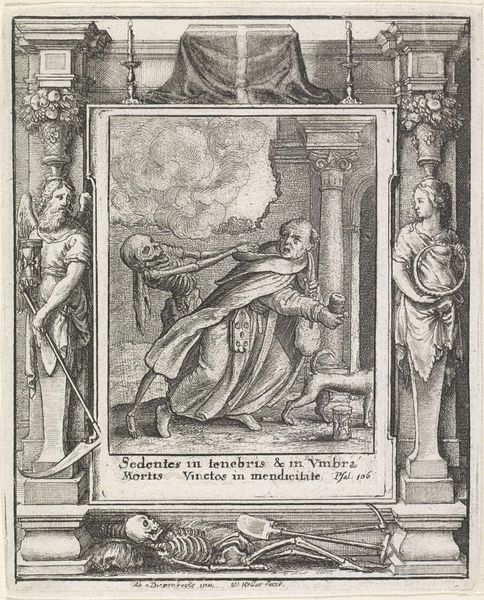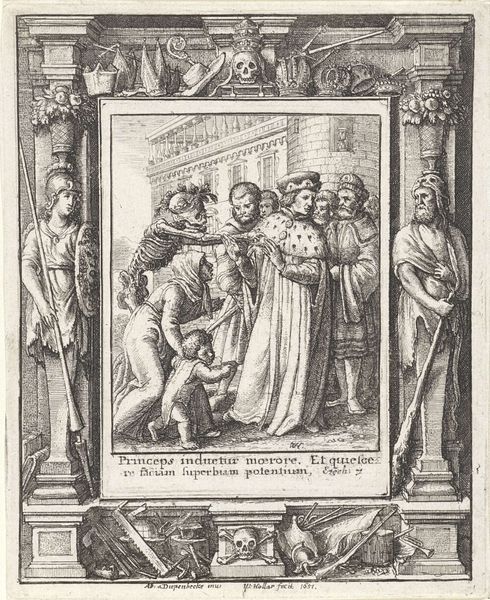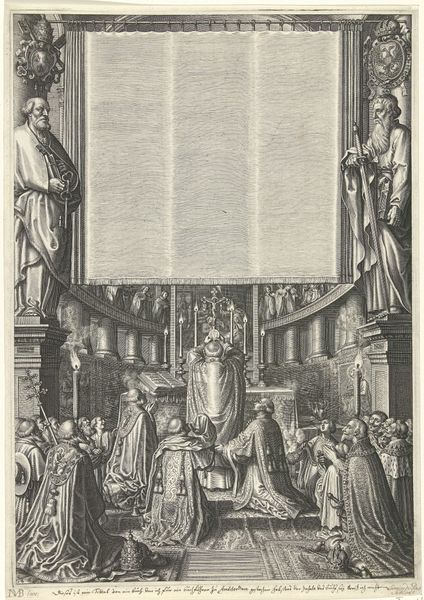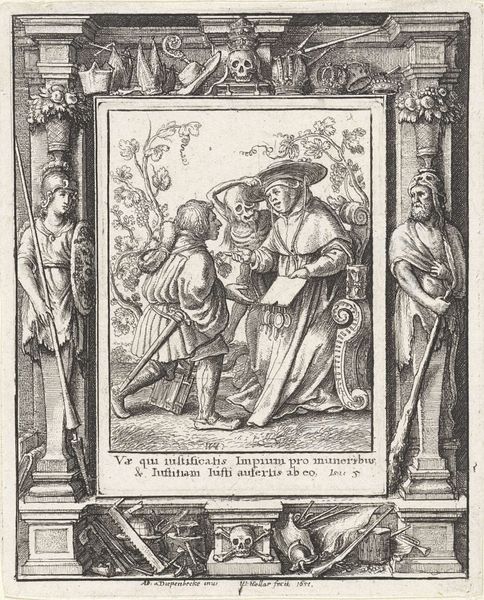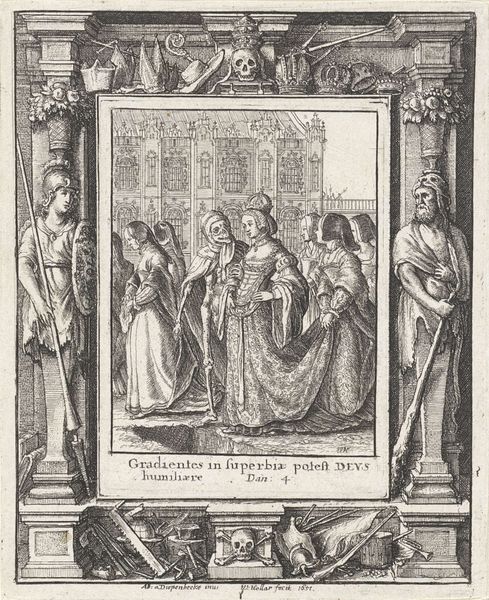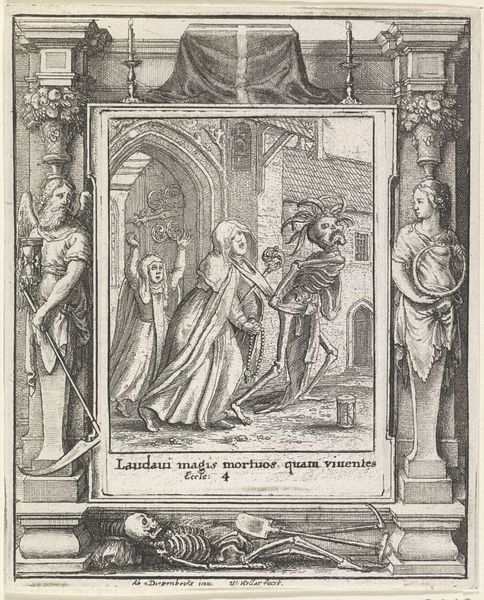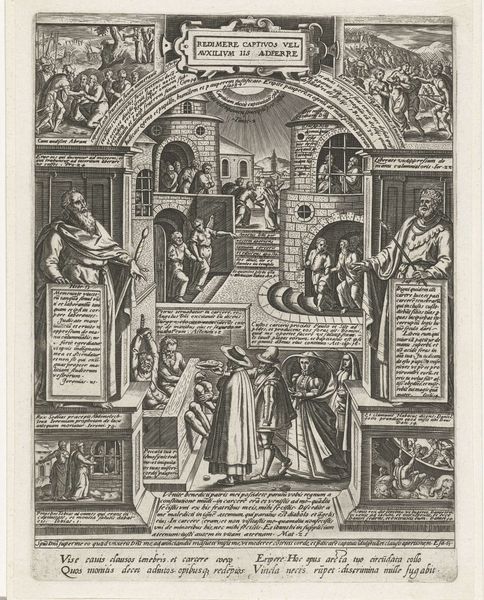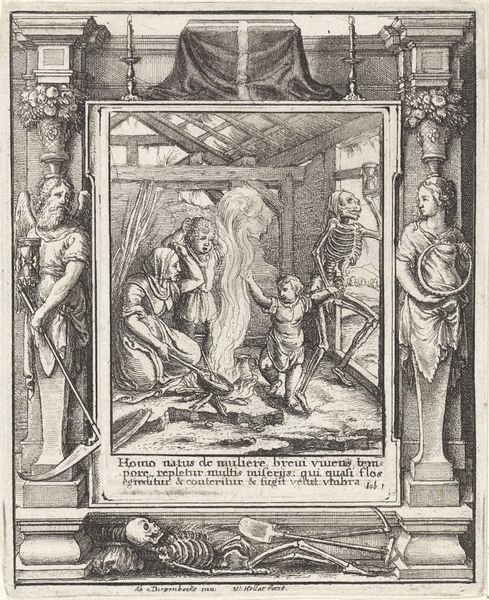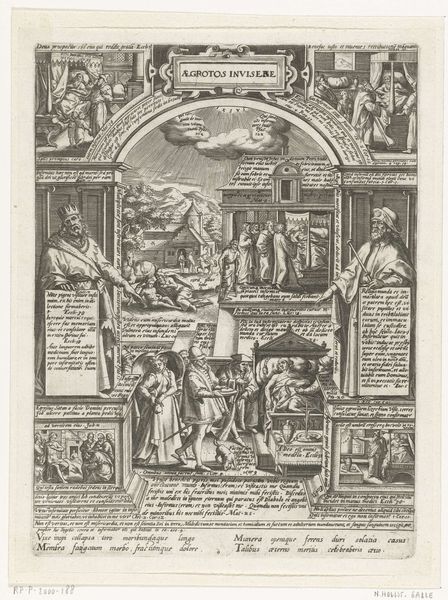
Dimensions: height 115 mm, width 95 mm, height 77 mm, width 55 mm
Copyright: Rijks Museum: Open Domain
Curator: Looking at this image, I'm struck by the intricate details. It's like a miniature stage for a profound allegory. Editor: Right? All that dense detail gives me a slightly claustrophobic feeling, though also…wonder. What’s the story here? Curator: This is "The Doctor and Death" by Wenceslaus Hollar, created in 1651. As a print, it offers fascinating insight into Baroque notions of mortality. The Latin inscription "Medice, cura te ipsum," is a quote from the Gospel of Luke, and it challenges the viewer. "Physician, heal thyself." Editor: Oh, I see it now. That skeletal figure HAS to be Death. The guy in the center—with his knowing glance and the scholarly garb, he's the doctor? He seems…unmoved, somehow. And look, even a second doctor shows up to assist! Death is offering the doc a bag, perhaps the wages he will earn? Ironic, right? The healer, being paid off by the ultimate taker? Curator: Precisely! And this engraving reflects the anxieties of a society dealing with disease and death—particularly relevant in a Europe still reeling from plagues and persistent epidemics. It engages directly with questions of professional responsibility and the limitations of medical science, too. Does privilege play a role, even here? Does position immunize against mortality? Editor: Makes you think, doesn’t it? It’s so dark, literally. Hollar uses the contrast to amplify the grim subject. And then you spot the skull hovering above, plus the hourglass—classical Momento Mori reminders that everyone dies. The winged putti are interesting. I feel like they’re mocking the inevitability of the ending, right? A tragic joke, really. And did you notice the poor dog at Death’s feet? Even the little creatures must suffer... Curator: The visual composition subtly reinforces the prevailing social hierarchy, with the medical profession positioned, ultimately, beneath death's unwavering power. Consider too the cultural impact, at the time. It’s clear this was made for relatively wide distribution—it speaks to how accessible such ideas needed to be during outbreaks of diseases. Editor: Definitely a conversation starter back then… and, frankly, even now. It’s cool how much detail Hollar managed to cram into this small space, and what ideas were conveyed. Death is inevitable, make peace with your lot and be vigilant while you have life. Curator: It does speak across the ages, prompting considerations around medicine, morality, and mortality—and the systemic questions it poses. Editor: Yes, a morbid reminder that expertise offers only so much protection, I suppose. And the small scale helps the medicine go down... or does it?
Comments
No comments
Be the first to comment and join the conversation on the ultimate creative platform.
